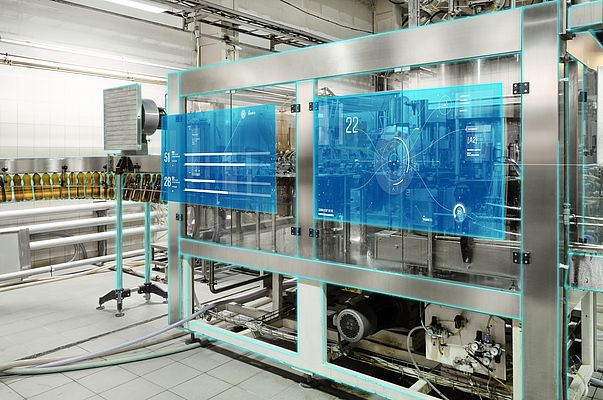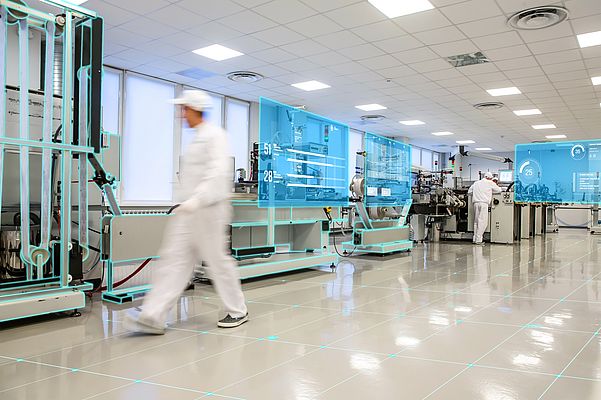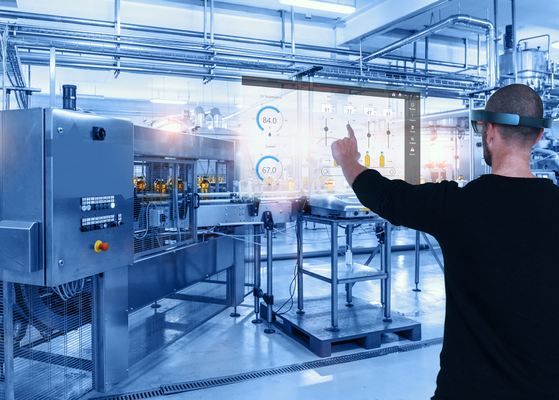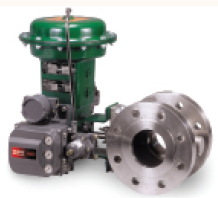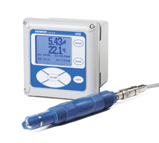Emerson. Following several decades of automation-driven operational improvements within manufacturing, incremental gains have diminished. To drive greater productivity, efficiency and safety, plant managers must now look to digitally empower their workforce by arming them with the tools to streamline standard operations, reduce complexity, enable improved decision-making, provide faster access to knowledge and experience, and secure on-demand access to information and expertise regardless of location.
Although many of these drivers are not new, the emergence of wireless plant networks and IIoT technologies supporting the digital transformation of operations is helping to provide step change improvements. A critical part of this change is enabling greater worker mobility with access to actionable data that creates the benefits of greater productivity, improved decision-making and faster resolution of issues, contributing towards increases in overall operational efficiency.
Advanced HMI supports mobile workers
Traditionally, monitoring and control of plant, equipment and process information has seen operators working at fixed PC-based human machine interfaces (HMI) within control rooms. These displays are often supplemented by HMIs on the plant floor near a specific machine or piece of equipment, although these tend to offer limited functionality. A more modern approach is to provide employees with greater mobility through durable high-performance mobile and handheld HMI technologies. Mobile devices empower workers, removing the tie to the control room and enabling operators to both maintain operations and troubleshoot issues in the field or on the plant floor. For some applications a fixed HMI may still be required, but many can benefit from the introduction of mobile HMIs. An example would be adjusting a setpoint and observing its effect. If the operator requires support from maintenance personnel, they can be contacted via the mobile HMI and collaboration can take place to troubleshoot the problem.
Augmented reality
As technology continues to evolve, so does the concept of HMI, and the integration of augmented reality (AR) is redefining the human-machine interface. AR technology has been introduced to enhance the user’s physical world with computer-generated content. By using AR, it is possible to add information in real time to the surrounding environment, which proves extremely helpful in evaluating the current circumstances in order to improve decision-making. This complementary audio-visual information is provided by electronic or IT devices.
AR is suitable for both the manufacturing and process industries, allowing operators to use technology integrated with standard HMI viewing tools to perform actions needed within various stages of the process, improving production efficiency, reducing the risk of errors and minimising production or maintenance downtime. AR allows operators to be instantly informed about any plant problem or requirement. They can go on site, receive the relevant information in real time, and perform guided step-by-step operations and set-ups directly on the spot.
Initially, AR applications were mostly used with smartphones or tablets, where images captured through the integrated webcam could be enhanced with electronic information based on specific needs and geographic positioning. The introduction of wearable devices has increased the range of applications and created new operational possibilities. Having the opportunity to wear HMI while working in the field or on the plant floor leaves operators’ hands free to perform tasks such as manual maintenance, to keep processes constantly under control, and act immediately and accurately based on the circumstance of the production process.
An AR device is connected via Wi-Fi to the PC that manages the supervision system to which field devices are connected. Devices usually come as a kit, including glasses or helmets fitted with displays, cameras, audio hardware, Wi-Fi connectivity and batteries that maximise flexibility. On the wearable screen, these systems can display dynamic, real-time information relevant to the task, as well as process data, systems status, alert-related information, required actions and helpful information. Operators can interpret the required commands, such as start, stop, set-point modification and instruction requests based on alerts.
For maintenance activities, AR systems make it possible to view on-screen documentation such as manuals for the part being maintained and also communicate hands-free with the operations centre using a wireless connection. Consequently, the instant visibility of relevant data significantly reduces the risk of human error when performing a procedure. A scenario in which the operator speaks to a machine, asks for information, addresses commands or directly interacts with the system using hand motions to launch or adjust a process is no longer science-fiction. Moreover, the machine may ask the operator to execute required commands or manual operations as required by the circumstance, guiding the operator in his/her activity, preventing any inaccuracy or lack of efficiency.
Although AR systems will tend to be complementary solutions, rather than completely replacing workstations that support traditional work processes, the hands-free nature of these devices provides much greater flexibility and speed during operational phases than is possible using standard HMI interface systems. Wearable AR systems both support and simplify operational activities, providing a solution that perfectly integrates with the supervision and HMI technologies commonly used to manage the automation systems and maintenance activities.
Key features of wearable AR HMI:
• Instant information on operations to perform according to the situation
• View real-time information related to the automation system
• Receive alert notifications and relevant instructions
• Access to guided maintenance
• Barcode or QR code scanning with real-time context-related feedback
• Connectivity and interaction with other operators at remote operations centres
• Interactive – and/or holographic – 3D views of automation systems
• Access to information via the web
• HMI interactivity with vocally-driven operation commands and gestural pointing
• Machine component recognition and instant access to related information
• Actionable information
Adopting AR and institutionalizing best practices enables workers to add more value than ever to operational and business performance. For example, the use of AR devices will optimise operations in the field, enabling operators to interact immediately with the control system without having to go elsewhere to use a supervision or HMI workstation. This enables the operator to be more efficient, react appropriately to ongoing situations and make better decisions.
Maintenance operatives can intervene faster and perform on-the-spot maintenance using on-site guidance and solutions to issues that will ultimately reduce equipment downtime. Another benefit is a reduction in learning time. By providing less skilled and/or experienced workers with access to helpful information and the ability to collaborate with skilled experts, organisations are not limited by shortages of skilled workers or travel restrictions.
Augmented reality HMI
Emerson is one of the first companies to offer AR solutions for SCADA/HMI, providing workers with immediate access to a wealth of data. By means of wearable AR devices, operators benefit from simplified process management and real-time information relating to the equipment or process they are working on. AR is integrated into Emerson’s Movicon.NExT SCADA/HMI platform, which translates to easier, less costly implementation and a faster return on investment.
Applications are provided that support Android smart glass devices and HoloLens based on Windows 10. The wearable devices can display any kind of real-time and historical data or information, including set-up, maintenance, guidance, code bar and other functions. In addition, operators can now dialogue vocally with a machine, ask information and give commands, as well as interact directly with the system using hand gestures to control and set-up processes. Furthermore, the machine can ask the operator to execute the necessary commands and give step-by-step instructions to carry out on-the-spot manual operations as needed to save time and avoid mistakes.
The AR HMI technology also uses a video camera and artificial intelligence to recognise equipment or parts of the plant. The technology will operate on any mobile device with a video camera and HTML5 browser, and will automatically display HMI project windows that contain the corresponding relevant information. This enables the operator to instantly obtain all the relevant information they need, making the management of complex plants much easier.
Conclusion
The integration of AR into SCADA/HMI platforms and the subsequent availability of actionable information via wearable devices offers the potential for new efficiency improvements. Having the opportunity to wear HMI while working in the industrial plant gives operators greater control of the current situation in hand, enables them to intervene promptly when and where the process demands it and helps them perform tasks faster and make better decisions. AR HMI has the potential to revolutionize how operators manage processes, optimise productivity and reduce downtimes.
Luca Begnini and Giuseppe Bettini, Emerson


